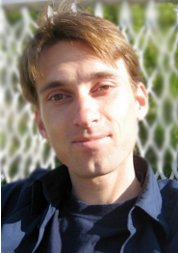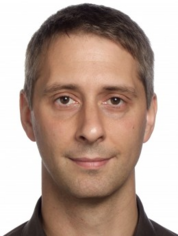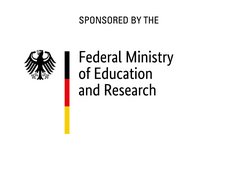KIT-PHI
The Karlsruhe Institute of Technology (KIT) was established in the year 2009 by the merger of the Forschungszentrum Karlsruhe (founded in 1956) and the Universität Karlsruhe (founded in 1825). KIT is one of the largest research and education institutes in Europe with more than 9.000 employees and an annual budget of about 850 million EUR. In the year 2017, more than 25.000 students received education at KIT, the majority (15.000) of whom in engineering sciences.
Team
The KIT-PHI group led by Prof. Alexey Ustinov belongs to the Physikalisches Institut (PHI) located on the south campus of KIT. The group has the required infrastructure required for the tasks of GEQCOS project. For sample fabrication, we will use state-of-the-art clean room facilities that are provided by the Nanostructure Service Laboratory (NSL) at KIT. The NSL provides equipment for the fabrication and characterization of nanostructures and operates an almost 210 m² clean room of ISO classes 6 and 7. The large pieces of equipment (EBL, FIB, SEM) are operated by skilled scientists and technicians who are also responsible for providing introductory and training courses, for supporting the users, equipment maintenance and NSL management. At NSL we have full access to 50 kV professional Jeol e-beam lithography system, multi-target Plassys evaporation chamber that is ideal for shadow evaporation of qubit Josephson junctions, wet benches, hot plates, reactive ion etching, etc. At PHI lab space, we have available optical microscopes, bonding machines, resistance probe station to quickly verify the parameters of custom-fabricated samples.
The KIT-PHI team disposes of 5 dilution refrigerators which are all equipped with GHz-bandwidth signal lines, magnetic shielding and filters necessary for measurements of superconducting circuits operated in the coherent quantum regime at millikelvin temperatures. One of these cryostats (dry BlueFors BF-LD250) will accommodate measurements of GEQCOS qubit circuits. This dilution cryostat is already equipped with most of electronics to perform the described microwave domain experiments. Most of the high-frequency devices are readily available, including vector network analyzers, microwave sources, etc. PHI maintains a mechanical workshop capable of modifying the existing and manufacturing new sample holders that we require for this project. The employed low-noise electronics for timed triggering of generators and data acquisition devices are custom-designed by the group together with the PHI electronic workshop.
Main tasks in the project
Within GEQCOS, KIT-PHI will characterize two-level defects in qubit circuits (WP1) and develop generalized flux (gFlux) qubits (WP2) as an alternative to the conventional transmon qubits. KIT-PHI team will develop single- and multi-qubit gates for gFlux qubits. Together with the our GEQCOS partners, we will evaluate the performance of gFlux circuits and consider them for replacing transmons in the developed multi-qubit architecture (WP5).
Expertise of staff members involved

Prof. Alexey Ustinov has been a full professor at KIT since 2008. His major field is experimental research on superconducting quantum circuits. Alexey Ustinov and his group have an internationally established expertise in the field of experimental low-temperature physics, superconducting quantum bits, nonlinear dynamics of Josephson junctions and arrays, high-frequency experiments with superconducting devices, studies of macroscopic quantum effects in these structures, and superconducting metamaterials. Alexey Ustinov (Research ID: J-4663-2015; ID Scopus: 22995725800) has published over 300 papers in peer reviewed journals receiving over 7000 citations, and has an h-index of 42 (WoS). The research of his group has been funded over the past years by the German Science Foundation (DFG), Volkswagen Foundation and other funding programs from Germany USA, Russia, and the EU. Currently, the Ustinov group is also receiving funding from Google Inc. to support the identification of defects that are limiting the fidelity of superconducting qubits.

Dr. Jürgen Lisenfeld has since 2008 been a postdoc in the group of Prof. Alexey Ustinov at KIT. Dr. Lisenfeld has 15 years of experience in the experimental research of coherent superconducting quantum devices. As a part of his PhD studies at the University of Erlangen-Nuremberg, in the year 2005 he demonstrated the first coherent operation of a superconducting qubit in Germany. He spent one year as a PostDoc in the group of Prof. Hans Mooij in TU Delft (NL) where he contributed to premature experiments in the ultra-strong cavity-QED regime and the development of two-qubit quantum gates. Since the year 2010, Dr. Lisenfeld has specialized in the study of two-level systems (TLS) and material defects in qubits. He has pioneered the development of several key technologies for the analysis of defects that are relevant for this project, which include in-situ TLS tuning by mechanical strain and electric-fields, their coherent manipulation, and methods to study their environmental interactions. He has published about 30 articles in peer reviewed journals which received over 1300 citations (h-index 16 on WoS, researcher-id: O-749-2014). During 2015-2020 his research was funded by DFG.

Dr. Hannes Rotzinger, is a permanent research scientist at the KIT (at the KIT since 2008). He received a Ph.D in the field of low temperature high resolution solid state particle detectors from the University of Heidelberg in Germany in 2006. He continued his work on particle detectors as a postdoc until 2008 at the Nasa Goddard Space Flight Center in Greenbelt (MA, USA) to work on an astronomical satellite mission. In 2009 he switched the research field and joined the workgroup of Prof. Alexey Ustinov, where he started working on superconducting circuits and nanostructures, hybrid quantum systems, qubits and microwave quantum circuits. His special interest are superconducting quantum circuits with a high kinetic inductance, where he pioneered studies of the properties of superconducting granular aluminium circuits in the microwave regime. He has published over 35 papers, has 1200 citations and a h-index of 20 (WoS). His work in Germany was supported in the past by DFG, BMBF and the European Commission.

